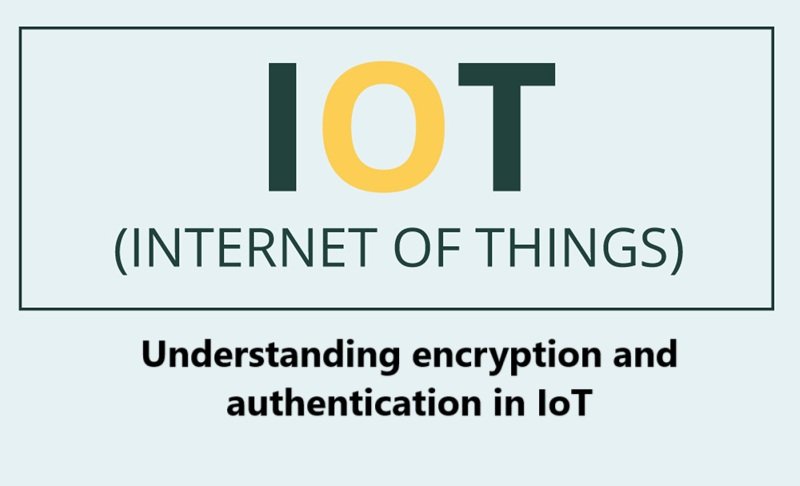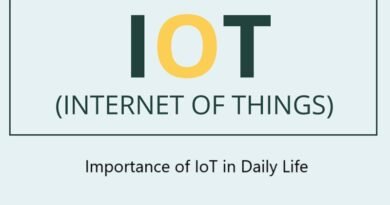Understanding Encryption and Authentication in IoT
The Internet of Things (IoT) has revolutionized industries by connecting devices, sensors, and systems that enable real-time monitoring, data collection, and automation. As the number of connected devices continues to grow, security becomes a critical concern. Ensuring the confidentiality, integrity, and authenticity of data and devices in the IoT ecosystem is vital to preventing cyberattacks, data breaches, and unauthorized access. Two fundamental components of securing IoT systems are encryption and authentication.
In this article, we will explore the concepts of encryption and authentication, their importance in IoT security, and how they are implemented to protect data and devices in the IoT environment.
What is Encryption in IoT?
Encryption is the process of transforming readable data (plaintext) into an unreadable format (ciphertext) using algorithms and cryptographic keys. The purpose of encryption is to protect the confidentiality of data, ensuring that only authorized parties can access and understand it. In IoT, encryption is essential for securing data that is transmitted over networks, especially since many IoT devices communicate over public or unsecured channels such as Wi-Fi, Bluetooth, and cellular networks.
Types of Encryption in IoT
- Symmetric Encryption:
- Symmetric encryption uses the same key for both encryption and decryption. This means that both the sender and the receiver must have the same secret key to securely communicate.
- While symmetric encryption is fast and efficient, its major challenge is key distribution. If the key is compromised, the security of the entire communication is at risk.
- AES (Advanced Encryption Standard) is one of the most commonly used symmetric encryption algorithms in IoT applications due to its strength and efficiency.
- Asymmetric Encryption (Public Key Infrastructure):
- Asymmetric encryption uses two different keys: a public key for encryption and a private key for decryption. The public key is shared with anyone who wants to send encrypted data, while the private key is kept secret and used only by the intended recipient to decrypt the data.
- Asymmetric encryption provides a higher level of security, especially for key distribution, as the private key does not need to be shared. It is widely used for securing communication in IoT devices.
- Common algorithms used for asymmetric encryption include RSA and Elliptic Curve Cryptography (ECC).
- End-to-End Encryption (E2EE):
- End-to-End Encryption ensures that data is encrypted on the sender’s device and can only be decrypted by the recipient. This prevents third parties, including service providers or hackers, from accessing the data while it is being transmitted through the network.
- In IoT, E2EE is used to secure the communication between devices, gateways, and cloud platforms, ensuring that sensitive information, such as health data or personal identifiers, remains private.
Importance of Encryption in IoT
- Data Confidentiality:
- Encryption ensures that only authorized devices or users can access and read sensitive data. Without encryption, data transmitted over IoT networks could be intercepted and accessed by malicious actors.
- Data Integrity:
- Encryption also helps ensure data integrity by making it difficult for attackers to tamper with data during transmission. With appropriate encryption mechanisms in place, any attempt to alter the data would render it unreadable.
- Privacy Protection:
- IoT devices often collect personal and sensitive information, such as location data, health statistics, and usage patterns. Encryption ensures that this data is protected from unauthorized access, maintaining user privacy and complying with privacy regulations such as the GDPR.
- Preventing Unauthorized Access:
- If encryption is not used, IoT data could be exposed to eavesdropping or man-in-the-middle (MITM) attacks, where an attacker intercepts and potentially alters the communication between devices. Encryption mitigates these risks.
What is Authentication in IoT?
Authentication is the process of verifying the identity of a device, user, or system to ensure that they are who they claim to be. In the context of IoT, authentication ensures that only authorized devices and users can access the network, communicate with devices, or access sensitive data. Without proper authentication mechanisms, unauthorized devices could gain access to the network, leading to security breaches or disruptions.
Types of Authentication in IoT
- Device Authentication:
- Device authentication ensures that only authorized devices can connect to the IoT network or communicate with other devices. This can be done using various mechanisms, such as digital certificates, pre-shared keys, or hardware-based authentication.
- For example, each IoT device can be provisioned with a unique device certificate that identifies it to the network, and devices must authenticate themselves before accessing resources.
- User Authentication:
- User authentication is used to verify the identity of users who interact with IoT devices or systems. This can involve traditional methods such as passwords, PIN codes, or more advanced techniques such as multi-factor authentication (MFA), where a user must provide multiple pieces of evidence (e.g., something they know and something they have).
- Strong user authentication is especially important for applications where humans interact with IoT systems, such as healthcare, smart homes, and industrial control systems.
- Mutual Authentication:
- In mutual authentication, both the device and the server or cloud platform authenticate each other. This ensures that devices can verify the identity of the server they are communicating with, and vice versa, before exchanging sensitive data.
- Mutual authentication typically involves the use of certificates or public/private key pairs, ensuring that both parties in the communication are trustworthy.
- Two-Factor Authentication (2FA):
- Two-factor authentication (2FA) is a security process in which the user is required to provide two forms of identification before being granted access. For example, users may need to provide both a password and a code sent to their mobile device.
- 2FA adds an extra layer of security to user authentication and is increasingly being used to secure access to IoT networks.
- Token-based Authentication:
- Token-based authentication uses a temporary digital token, such as a JWT (JSON Web Token), to authenticate devices or users. These tokens are typically generated after a successful initial authentication and allow devices or users to access IoT services for a limited time.
- Tokens help improve security by reducing the need to store sensitive credentials and are often used in cloud-based IoT applications.
Importance of Authentication in IoT
- Preventing Unauthorized Access:
- Authentication ensures that only trusted devices and users can interact with the IoT system. Without strong authentication, malicious actors could impersonate legitimate devices or users, gaining unauthorized access to the network and potentially causing harm.
- Securing Device Communication:
- Proper authentication helps secure communication between IoT devices, ensuring that only verified devices can send or receive data. This prevents attacks where unauthorized devices try to communicate with IoT devices or manipulate their behavior.
- Protecting Data and Resources:
- IoT systems often have valuable resources, such as sensitive data or control over critical infrastructure (e.g., smart grids, industrial systems). Authentication ensures that only authorized parties can access and control these resources.
- Compliance with Regulations:
- Strong authentication mechanisms help IoT systems comply with various regulatory requirements, such as GDPR, HIPAA, or industry-specific standards. Authentication ensures that personal and sensitive data is protected, and that only authorized individuals can access it.
Best Practices for Implementing Encryption and Authentication in IoT
To ensure the security of IoT systems, organizations must follow best practices when implementing encryption and authentication mechanisms:
- Use Strong Encryption Algorithms:
- Always use robust encryption algorithms like AES-256 for symmetric encryption and RSA or ECC for asymmetric encryption. These algorithms offer strong security and are resistant to brute-force and cryptographic attacks.
- Implement Key Management:
- Proper key management is essential for maintaining the security of IoT systems. Securely store cryptographic keys, rotate them periodically, and ensure they are only accessible to authorized parties.
- Secure Device Authentication:
- Use public key infrastructure (PKI) or digital certificates for secure device authentication. This ensures that only legitimate devices can access the IoT network.
- Enforce Multi-Factor Authentication (MFA):
- Use MFA for user authentication to add an extra layer of security. This is especially important for applications where users interact with critical IoT systems, such as healthcare or industrial control systems.
- Use End-to-End Encryption:
- Encrypt data from the point of collection to the point of use, ensuring that even if data is intercepted, it remains unreadable to unauthorized parties.
- Regularly Update Security Protocols:
- Keep IoT devices and communication protocols up to date to protect against emerging threats. Apply security patches and firmware updates promptly to mitigate vulnerabilities.
- Monitor and Audit Authentication Events:
- Continuously monitor authentication attempts and track failed login attempts, device access, and data interactions to detect any suspicious activities.
Conclusion
Encryption and authentication are the cornerstones of securing IoT systems. While encryption ensures that data remains private and protected from tampering, authentication ensures that only trusted devices and users can access the system. Together, these mechanisms form a comprehensive security framework that helps safeguard IoT networks, devices, and the data they generate.
By implementing strong encryption and authentication practices, organizations can reduce the risk of data breaches, unauthorized access, and cyberattacks, ensuring the confidentiality, integrity, and availability of their IoT systems.







